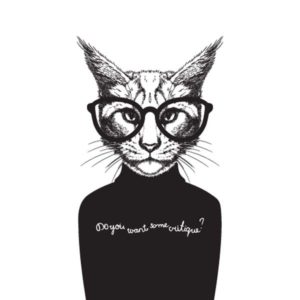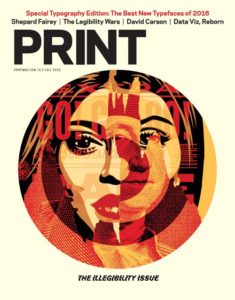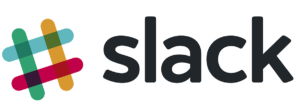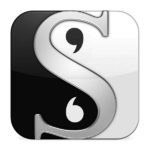Get Critiqued! Do It Now!

It’s helpful to hear the painful, blunt, honest truth about your magazine — from a professional. Many publishers, editors, and art directors toil away in some degree of isolation, wondering what’s working and what’s missing in their magazines. If this includes you, a peer critique from a respected colleague could be just what you need. Some conferences (like the CASE Alumni Editors Forum) offer critiques performed by the event’s faculty. If the events you attend don’t offer this, try contracting with a peer you admire. Request a review of two recent issues with feedback broken down into categories: overall publication, story selection, writing, design, even paper stock.
Calling all Magophiles
 Magazine professionals tend to be magophiles — collectors of various titles in teetering stacks, flaggers of pages by sticky note, keepers of bits of inspiration just waiting for the right application. What happens when you transfer this to the office and make it a group activity? You end up with an Inspiration Station. Designate a space in your office where members of your team share select magazine gems they love — spreads, covers, graphic treatments, type styling. When you’re planning a story, draw on these to fuel your dialog and inspire your creative brilliance.
Magazine professionals tend to be magophiles — collectors of various titles in teetering stacks, flaggers of pages by sticky note, keepers of bits of inspiration just waiting for the right application. What happens when you transfer this to the office and make it a group activity? You end up with an Inspiration Station. Designate a space in your office where members of your team share select magazine gems they love — spreads, covers, graphic treatments, type styling. When you’re planning a story, draw on these to fuel your dialog and inspire your creative brilliance.
PRINT [Design] Magazine

PRINT is a magazine about visual culture and design. Founded in 1940, the award-winning publication showcases the extraordinary in design both on and off the page: publication and book design, animation and motion graphics, corporate branding and rock posters, exhibitions and street art. Rather than focusing on the how-to of design, the experts who write for PRINT cover the why — why the world of design looks the way it does, how it has evolved, and why the way it looks matters. Published four times per year. Also, check out — and consider entering — PRINT’s prestigious Regional Design Awards. printmag.com
“PRINT stands out in a cluttered field with its expansive view of its subject, its relentless curiosity, and its determination to look at design not in a vacuum but as a crucial gateway to popular culture, the environment, even politics.” — American Society of Magazine Editors
Slack: Ironically, Where Work Happens

Slack is a cloud-based collaboration tool. It uses persistent chat rooms, direct messaging, and a powerful search function to enable Slack teams to consolidate their project-based communication into a simple but highly functional space. Team conversations are organized into “channels,” which can be made public (open to all users) or private (restricted to invited users). Create your own channels — for functional departments, discrete projects, whatever you’d like. Communicate with team members by posting to a channel, sending private or group direct messages, or launching a voice or video call. And post and share any type of file. Slack indexes everything, including the contents of your files, for finely tuned searching. It also enables integration with a near-endless list of other tools, including Dropbox, Google Drive, and Trello. Use Slack in a native app, web client, or desktop client, all fully synched. Free with limits on storage and integrations; two paid tiers offer higher thresholds and additional perks. slack.com
Draft at Warp Speed
 Talk and your words appear on the screen. Dragon speech recognition software is 3x faster than typing and, because it continually improves as it adapts to your voice, is 99 percent accurate. Use it to dictate first drafts, transcribe interviews or podcasts, and command your computer to perform simple editing functions. Integrates with Scrivener (right), Microsoft Word, Apple Pages, Apple Keynote, and others. Dragon is a powerful tool for those fluid thinkers who may even want to pace while they write. Desktop and mobile versions available, with a free trial for the latter. nuance.com
Talk and your words appear on the screen. Dragon speech recognition software is 3x faster than typing and, because it continually improves as it adapts to your voice, is 99 percent accurate. Use it to dictate first drafts, transcribe interviews or podcasts, and command your computer to perform simple editing functions. Integrates with Scrivener (right), Microsoft Word, Apple Pages, Apple Keynote, and others. Dragon is a powerful tool for those fluid thinkers who may even want to pace while they write. Desktop and mobile versions available, with a free trial for the latter. nuance.com
Order from Chaos

Scrivener is software for writers — and not word processing software. Think of it as an authoring tool that helps you organize your ideas and develop the structure and flow of your long-form content before you even think about using Word. Features include a corkboard, where you can park ideas or break your content down onto virtual index cards that can be rearranged with a simple drag and drop; the ability to split your screen with your draft on one side and saved research assets (images, PDF files, webpages, etc.) on the other; and an outline panel that allows you to easily navigate and rearrange sections of your text as well as notes and research materials. Scrivener boasts many other features — use what works for you and leave the rest. License fees range from $35-$70. Free trial available. literatureandlatte.com

